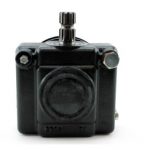LawnEQ is a trusted source for genuine OEM Parts- Shop for the part you need from your favorite manufacturers such as Landpride, Toro, and more today on our OEM Parts Lookup Tool!
Throughout the year, you will have a variety of materials that may need to be spread throughout your property – everything from seed, to fertilizer, to ice melt and rock salt. You’ll need a spreader to provide a nice, even distribution of these materials. Without a spreader that can properly regulate the spread rate, you’ll get clumps of product in some areas, while it may be spotty and patchy in others. So how do you choose the right piece of equipment for your property?

Scotts EdgeGuard Broadcast Spreader
Push, Pull, or Carry?
This refers to the propulsion of the unit. Certain methods might not make sense for you – for instance, if you don’t already have a tractor or utility vehicle, you won’t want to buy a spreader that needs to be pulled behind one of these.
- Push – Shown at right, this is the most common type. Almost all of them are basically a large hopper bucket on two or four wheels. There are a variety of sizes available, ranging from mini versions meant for a few hundred square feet that only hold 5-10 pounds of product, up to large versions that can hold up to 100 pounds of product.
- Pull – Made for larger areas, these spreaders are made to be pulled behind a tractor or utility vehicle.
- Carry – Handheld spreaders are great for tiny lawns where even the smallest push mower may be overkill. However, they come with a number of limitations, and also tend to suffer from being of lower quality than push or pull spreaders.
Broadcast Spreader vs. Drop Spreader
First of all, you’re probably wondering what the difference between the two is. Simply put, the drop spreader drops what you are spreading from underneath the spreader, leaving a trail directly under the unit. A broadcast spreader, on the other hand, throws what you are spreading out in an arc.
Advantages of a Broadcast Spreader
- Provide more uniform coverage.
- Covers a greater area in less time.
- Prevents a pattern from being formed in the lawn from application.
Advantages of a Drop Spreader
- Easier to use in tight space.
- More controlled application pattern.
- Easier to use for the new yard keeper.
Choosing and Using a Spreader
So when it comes down to choosing the right spreader for your lawn, here are some hints:
- Strangely shaped lawn? Go with a drop spreader.
- Large lawn? Go with a broadcast spreader.
- Flower beds in the lawn? Choose a drop spreader to avoid materials being spread into the garden beds.
- Is your time limited? Choose a broadcast spreader.
As far as actually putting your spreader to use, keep in mind that you never want to leave anything in the hopper over a period of time, and it should be emptied after every use. You will need to maintain it as with any other piece of lawn equipment – check the tires regularly, lubricate working parts regularly, and look for cracks and deterioration on a regular basis.
If you are using a drop spreader in long, straight line, cut your application rate in half and make two rounds, with the second set of application paths being perpendicular to the first. This avoids striping.






